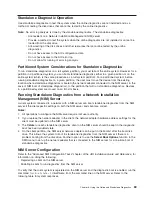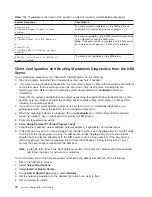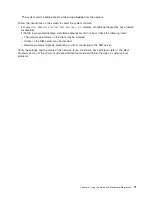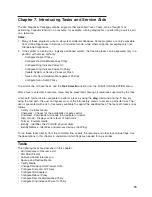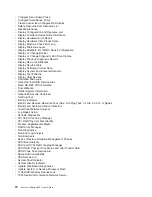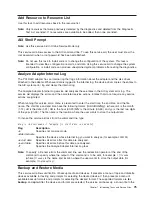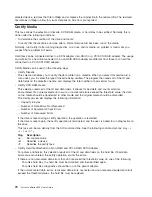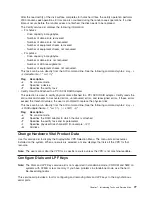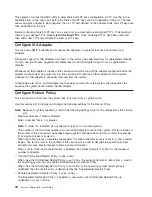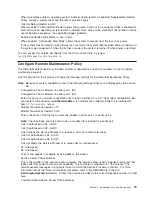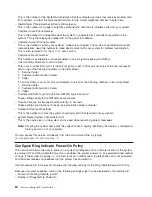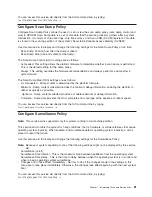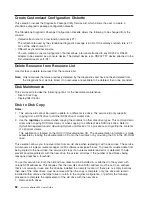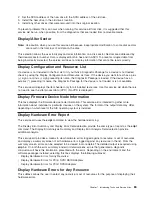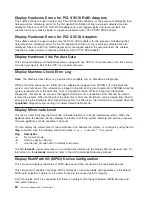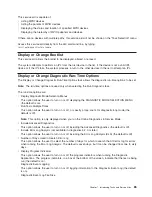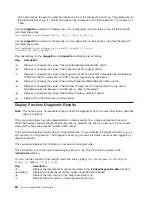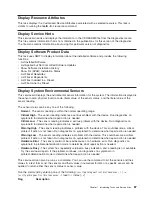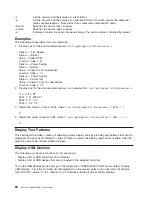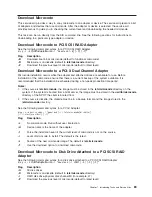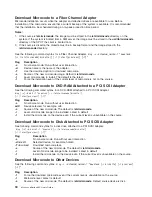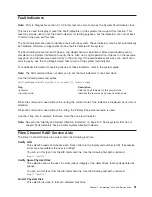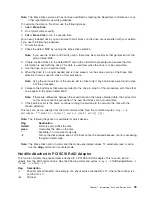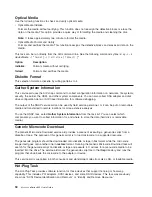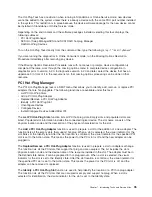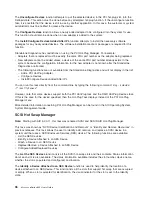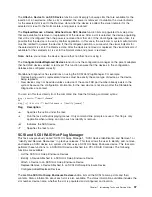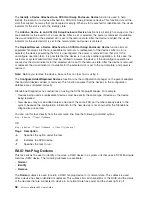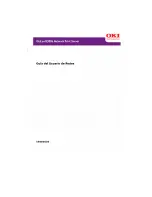
2.
Set
the
SCSI
address
of
the
new
drive
to
the
SCSI
address
of
the
old
drive.
3.
Install
the
new
drive
in
the
old
drive’s
location.
4.
Install
any
other
drives
(that
were
removed)
into
their
original
location.
To
prevent
problems
that
can
occur
when
running
this
service
aid
from
disk,
it
is
suggested
that
this
service
aid
be
run,
when
possible,
from
the
diagnostics
that
are
loaded
from
removable
media.
Display/Alter
Sector
Note:
Use
caution
when
you
use
this
service
aid
because
inappropriate
modification
to
some
disk
sectors
can
result
in
the
total
loss
of
all
data
on
the
disk.
This
selection
allows
the
user
to
display
and
alter
information
on
a
disk
sector.
Sectors
are
addressed
by
their
decimal
sector
number.
Data
is
displayed
both
in
hex
and
in
ASCII.
To
prevent
corrupted
data
from
being
incorrectly
corrected,
the
service
aid
does
not
display
information
that
cannot
be
read
correctly.
Display
Configuration
and
Resource
List
If
a
device
is
not
included
in
the
Test
List
or
if
you
think
a
Diagnostic
Package
for
a
device
is
not
loaded,
check
by
using
the
Display
Configuration
and
Resource
List
task.
If
the
device
you
want
to
test
has
a
plus
(+)
sign
or
a
minus
(-)
sign
preceding
its
name,
the
Diagnostic
Package
is
loaded.
If
the
device
has
an
asterisk
(*)
preceding
its
name,
the
Diagnostic
Package
for
the
device
is
not
loaded
or
is
not
available.
This
service
aid
displays
the
item
header
only
for
all
installed
resources.
Use
this
service
aid
when
there
is
no
need
to
see
the
vital
product
data
(VPD).
(No
VPD
is
displayed.)
Display
Firmware
Device
Node
Information
This
task
displays
the
firmware
device
node
information.
This
service
aid
is
intended
to
gather
more
information
about
individual
or
particular
devices
on
the
system.
The
format
of
the
output
data
may
differ
depending
on
which
level
of
the
AIX
operating
system
is
installed.
Display
Hardware
Error
Report
This
service
aid
uses
the
errpt
command
to
view
the
hardware
error
log.
The
Display
Error
Summary
and
Display
Error
Detail
selection
provide
the
same
type
of
report
as
the
errpt
command.
The
Display
Error
Analysis
Summary
and
Display
Error
Analysis
Detail
selection
provide
additional
analysis.
This
service
aid
provides
a
means
to
view
hardware
errors
logged
against
a
resource
or
set
of
resources
and
displays
a
summary
screen
of
all
hardware
errors
logged
against
any
resource
in
the
list.
From
the
summary
screen,
errors
can
be
selected
to
be
viewed
in
more
detail.
The
detailed
output
is
acquired
using
errpt
-a
.
On
both
the
error
summary
and
error
detail
screens,
errors
that
generated
a
diagnostic
conclusion
will
have
this
information
presented
with
the
error.
Depending
on
the
environment
and
the
software
packages
installed,
selecting
this
task
displays
the
following
subtasks:
v
Display
Hardware
Errors
for
Any
Resource
v
Display
Hardware
Errors
for
PCI-X
SCSI
RAID
Adapters
v
Display
Hardware
Errors
for
PCI-X
SCSI
Adapters
Display
Hardware
Errors
for
Any
Resource
This
subtask
allows
the
user
to
select
any
resource
or
set
of
resources
for
the
purpose
of
displaying
their
hardware
errors.
Chapter
7.
Introducing
Tasks
and
Service
Aids
83
Summary of Contents for p 655 series
Page 1: ...pSeries 655 User s Guide SA38 0617 03 ERserver...
Page 2: ......
Page 3: ...pSeries 655 User s Guide SA38 0617 03 ERserver...
Page 10: ...viii Eserver pSeries 655 User s Guide...
Page 14: ...xii Eserver pSeries 655 User s Guide...
Page 16: ...xiv Eserver pSeries 655 User s Guide...
Page 24: ...6 Eserver pSeries 655 User s Guide...
Page 32: ...14 Eserver pSeries 655 User s Guide...
Page 36: ...18 Eserver pSeries 655 User s Guide...
Page 90: ...72 Eserver pSeries 655 User s Guide...
Page 144: ...126 Eserver pSeries 655 User s Guide...
Page 208: ...190 Eserver pSeries 655 User s Guide...
Page 214: ...196 Eserver pSeries 655 User s Guide...
Page 217: ......

